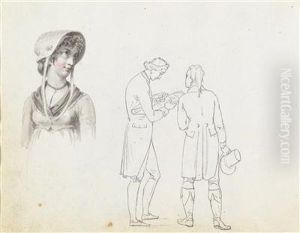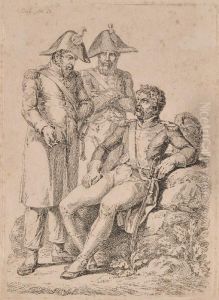Vincenz Georg Kininger Paintings
Vincenz Georg Kininger was an Austrian artist born in 1767 in Vienna, a city that was a vibrant center for the arts and culture during the Habsburg Monarchy. His life spanned the late Baroque period into the Romantic era, a time of significant change and development in European art. Kininger's contributions to art are noted for their diversity, including painting, drawing, and engraving, showcasing his versatile talent and adaptability to the evolving artistic trends of his time.
Kininger received his artistic training in Vienna, where he was deeply influenced by the artistic environment of the city, characterized by its rich artistic traditions and the patronage of the Habsburg monarchy. He was particularly known for his detailed and delicate drawings and watercolors, often focusing on landscapes, architectural studies, and genre scenes. His work reflects the transition from the detailed precision of the Baroque to the more emotive and atmospheric qualities of Romanticism, capturing the changing tastes and sensibilities of the period.
Throughout his career, Kininger was involved in various significant projects, including serving as a court artist for the Habsburg monarchy. This prestigious position allowed him to work closely with some of the most influential figures of his time, contributing to his reputation and the dissemination of his work. Additionally, his engravings and illustrations were highly sought after for books and periodicals, further establishing his reputation as a skilled draftsman and engraver.
Kininger's legacy is preserved in several European art collections, where his works are valued for their historical significance and artistic quality. His ability to capture the essence of his time, from the grandeur of architectural landmarks to the simplicity of daily life, makes his work a valuable window into the world of late 18th and early 19th-century Austria. Vincenz Georg Kininger passed away in 1851, leaving behind a body of work that continues to be appreciated for its craftsmanship and historical value.







